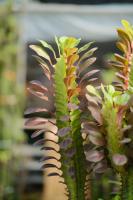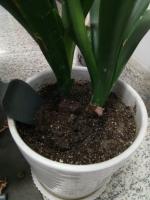Can Teak Trees be Planted with Coconut Trees?
Teak trees and coconut trees are both valuable species of tropical trees. Teak is famous for its durable, high-quality wood, while coconuts are famous for their versatile culinary use and as a source of coconut oil. It's not uncommon for farmers and plantation owners to wonder whether these two species can be planted together, either for revenue-generation or improving the environment.
The Pros and Cons of Planting Teak Trees with Coconut Trees
There are several factors to consider when looking at planting teak trees with coconut trees. One of the key reasons for considering this option is that teak trees take much longer to mature than coconut trees, so you can use the coconuts for revenue while waiting for the teak to reach maturity. Additionally, coconuts have a low canopy, which means that they do not compete with the teak trees for sunlight.
However, the combination of teak trees and coconut trees may not be ideal in certain situations. First, teak trees require more space and nutrients than coconut trees, and this competition can affect the growth of the coconut trees. Second, teak trees grow to become very large, which can mean that they cast a shadow over the coconut trees, reducing their access to sunlight. This can slow down their growth and lower their quality, potentially reducing revenue.
The Growing Conditions for Teak Trees and Coconut Trees
There are several key differences in the growing conditions for teak trees and coconut trees. Teak prefers well-drained soil while coconut trees do well in sandy or loamy soils, which often require irrigation. Teak may require fertilizer and irrigation to thrive while coconut trees can grow well with less maintenance.
In terms of climate, both species favor tropical regions with abundant rainfall, however, teak trees require some amount of dry period, and do not grow well in extremely humid conditions. In contrast, coconut trees thrive in high humidity and coastal areas. Therefore, planting both species together requires careful consideration of the microclimate of the site.
The Benefits of Mixed-species Plantations
Mixed-species plantations, which involve planting several species of trees in the same area, is an area of growing research interest due to the potential advantages for ecosystem processes and services. Aiming for a balanced mix of species can lead to superior climate adaptation and resiliency, reducing the risks associated with monoculture - such as pathogen or pest outbreaks that can easily spread through single-species plantations. Furthermore, mixed-species systems can enhance soil health, supporting better nutrient cycling and decomposition rates.
While planting teak and coconut trees together may present challenges, it is not impossible. The best approach would be to plan out the area thoughtfully, making sure the trees are planted in such a way that the unique needs and growing conditions of each species are met. An interdisciplinary team of experts, including forestry and agricultural professionals, can carefully evaluate the site and offer advice on the best way to integrate the two species.
In Conclusion
Overall, planting teak and coconut trees together can be a viable option for generating revenue, improving the environment, and enhancing ecosystem resiliency, but it requires careful consideration of site characteristics, microclimate, and the unique needs of each species. Proper planning and management can ensure that the trees complement each other, rather than compete with each other, resulting in greater overall system benefits.

 how many times do yo...
how many times do yo... how many planted tre...
how many planted tre... how many pine trees ...
how many pine trees ... how many pecan trees...
how many pecan trees... how many plants comp...
how many plants comp... how many plants can ...
how many plants can ... how many plants and ...
how many plants and ... how many pepper plan...
how many pepper plan...































